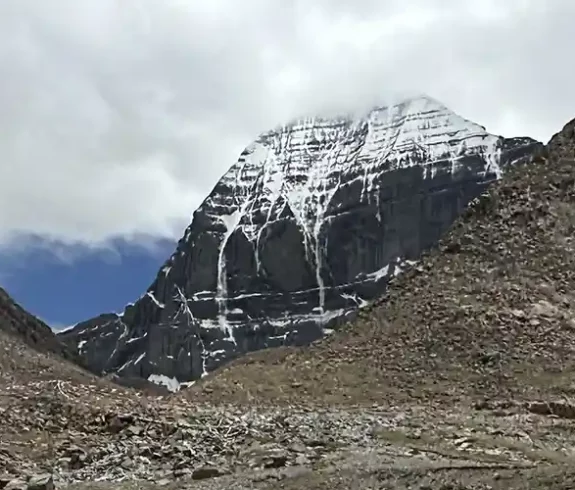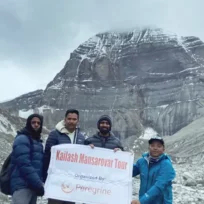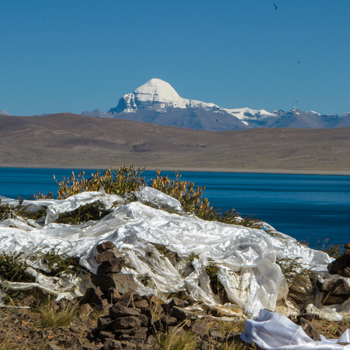Kailash Mansarovar, nestled in the majestic Himalayas of Tibet, beckons pilgrims and adventurers with its profound spiritual significance. Hindus, Buddhists, Jains, and Bon followers hold this region sacred, drawn by the allure of Mount Kailash, believed to be the dwelling of Lord Shiva. The nearby Lake Mansarovar, a pristine body of water, adds to the spiritual aura of this extraordinary place.
Selecting the best time to visit Kailash Mansarovar is crucial for a safe and rewarding experience. The region’s challenging weather patterns throughout the year can impact accessibility and safety. Furthermore, specific periods hold greater religious significance due to festivals and events, enriching the spiritual tour for those who visit during these times.
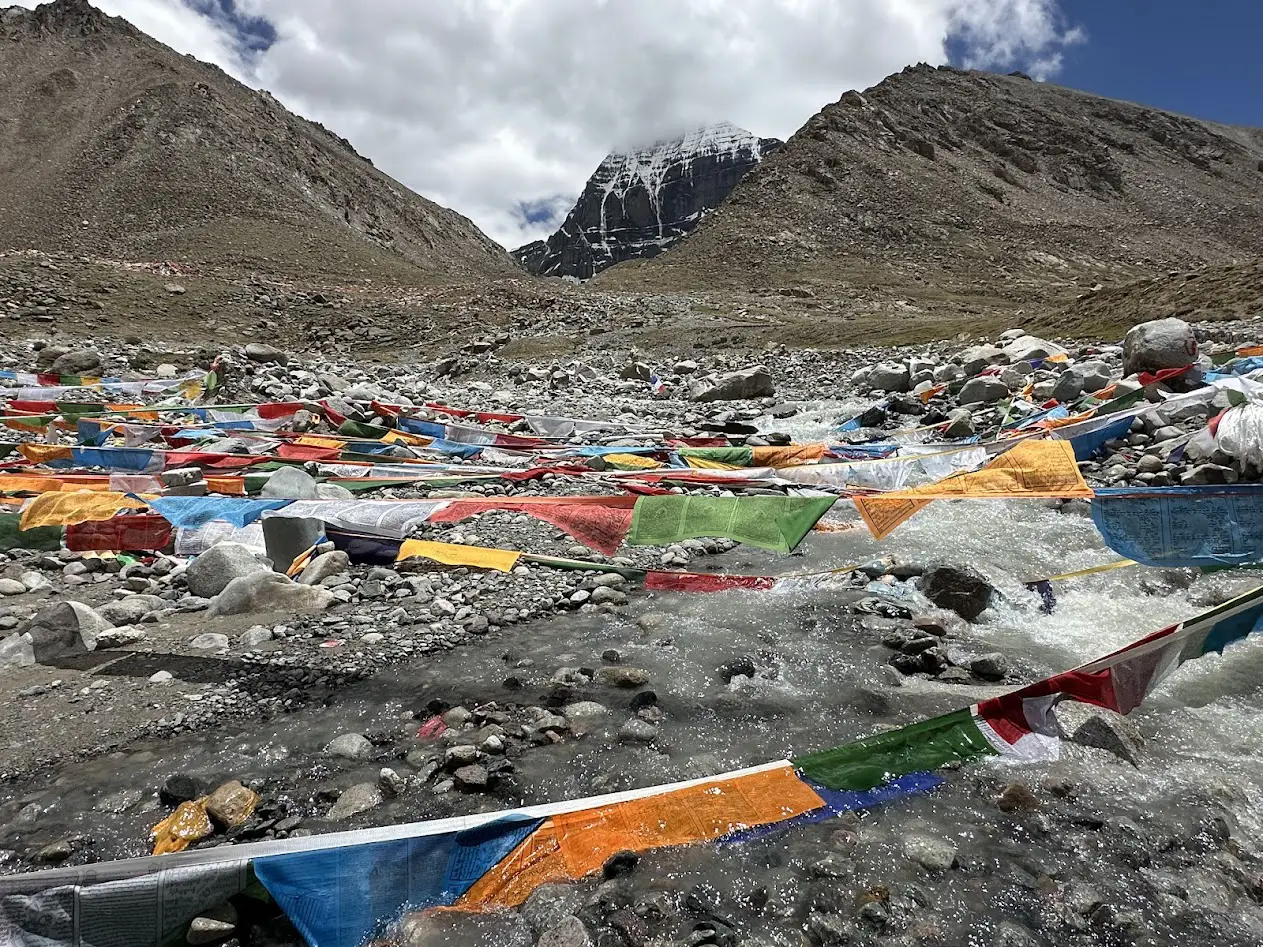
Understanding Weather Patterns in Kailash Mansarovar: Key to Choosing the Best Time to Visit
The Kailash Mansarovar region experiences a cold, arid climate year-round, with unpredictable weather due to its high altitude. Understanding the seasonal variations is essential to choose the best time to visit. Spring and Fall offer pleasant temperatures and clear skies, making them popular choices for trekking. Summer is warmer but comes with monsoon rains, while winter brings harsh conditions and makes the region inaccessible.
General Climate of the Region
The Kailash Mansarovar region boasts a cold, arid climate year-round, marked by low temperatures and minimal rainfall. The high altitude amplifies these conditions, leading to unpredictable weather. Packaging for various weather scenarios is crucial when planning your trip to determine the best time to visit Kailash Mansarovar.
Seasonal Variations in Kailash Mansarovar
Each season in Kailash Mansarovar offers unique weather patterns that affect visitors’ experience. Let’s delve into the details:
Spring (April-May): An Emerging Option for the Best Time to Visit Kailash Mansarovar
- Weather: Throughout the day, temperatures gradually warm up, generally settling between a cool five °C and a milder 15°C (41°F to 59°F). However, nighttime temperatures can still plunge below freezing.
- Considerations: This season offers generally pleasant weather, making it suitable for trekking. Occasional snowfall and cold winds require preparation. The trails are less crowded than peak season, offering a more tranquil experience for those seeking the best time to visit Kailash Mansarovar.
Summer (June-August)
- Weather: Summer brings the warmest temperatures, reaching 20°C (68°F) during the day. Nighttime remains chilly. The monsoon season brings occasional rain and cloud cover.
- Considerations: While warmer temperatures provide comfortable trekking conditions, be ready for rain and potentially slippery trails. Expect larger crowds during the peak pilgrimage season.
Autumn (September-October): A Popular Choice for the Best Time to Visit Kailash Mansarovar
- Weather: Temperatures start to decrease, with daytime highs similar to spring (5°C to 15°C/41°F to 59°F). Nights turn colder, often below freezing. Clear, dry weather prevails, offering excellent visibility.
- Considerations: Many favored Fall as the best time to visit Kailash Mansarovar due to its clear skies and pleasant temperatures. Pack warm clothing for the colder nights.
Winter (November-March)
- Weather: Winter ushers in the harshest conditions, with heavy snowfall and temperatures plummeting below freezing. Road closures and harsh weather make the region largely inaccessible.
- Considerations: Visiting during winter is strongly discouraged due to extreme weather and safety concerns.
Best Seasons for Visiting Kailash Mansarovar: Choosing the Best Time for Your Journey
Determining the best time to visit Kailash Mansarovar depends on your preferences and priorities. Spring and fall generally present the most favorable conditions, balancing comfortable temperatures with accessibility and breathtaking scenery.
Spring (April to June): A Tranquil and Scenic Escape
Springtime presents an enticing opportunity to experience the best time to visit Kailash Mansarovar during a less crowded shoulder season. The days gradually warm up, and you typically reach a pleasant five °C to 15°C (41°F to 59°F), which makes for ideal trekking with snow- and ice-free trails. The landscape awakens with vibrant wildflowers, painting a breathtaking backdrop for your spiritual tour.
Advantages
- Mild Weather: Spring weather allows for comfortable trekking and regional exploration.
- Clear Paths: The trails become more accessible and safer as the winter snow and ice melt.
- Less Crowded: Fewer pilgrims and tourists visit during this time, ensuring a more peaceful and serene experience.
- Blooming Landscape: Witness the magical sight of wildflowers adorning the already stunning scenery.
Drawbacks
- Lingering Winter Cold: Early spring, especially April, may still carry a chill from the winter months, particularly at higher altitudes and during nighttime. Pack warm layers for added comfort.
- Limited Facilities: Some amenities and accommodations may have limited operation during the shoulder season. We recommend checking availability in advance and preparing for potential limitations.
Summer (July to August): Balancing Adventure and Spirituality
Summer brings a vibrant blend of cultural festivities and natural splendor to the Kailash Mansarovar region. However, the monsoon season also arrives, presenting challenges for those venturing here. Let’s explore what summer offers to help you decide the best time to visit Kailash Mansarovar.
Weather Considerations
- Monsoon Impact: July and August usher in the monsoon season, occasionally causing rainfall, the potential for landslides, and road closures. These disruptions can significantly alter travel plans and access to the region.
- Cloudy Vistas: While the landscape flourishes in lush greenery during this period, frequent cloud cover may obscure views of the majestic Mount Kailash and its surrounding peaks.
Cultural Festivities
- Saga Dawa Festival: Tibetan Buddhists celebrate the birth, enlightenment, and death of Gautama Buddha in June or July with this significant festival. Witnessing this vibrant celebration can deeply enrich pilgrims’ experiences.
- Shravan Month: For Hindus, July/August is the holy month of Shravan, dedicated to Lord Shiva. It makes it a famous pilgrimage to Mount Kailash, which is considered his sacred abode.
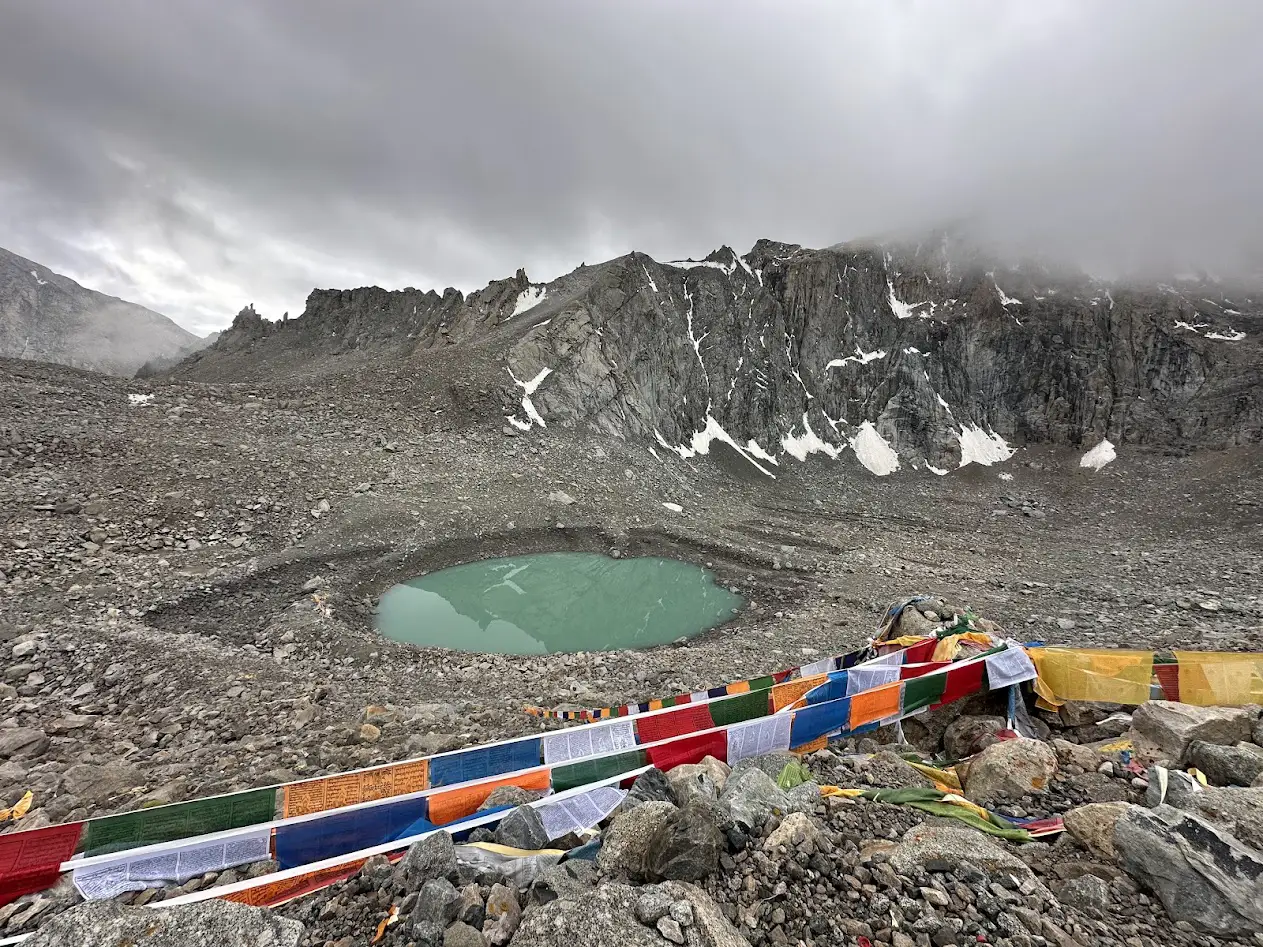
Is summer the best time for you to visit Kailash Mansarovar?
Despite the monsoon challenges, summer provides a unique opportunity to experience the region’s cultural richness and spiritual energy. If you prepare for potential weather disruptions and are eager to participate in local festivities, summer might be your ideal time to visit.
However, if clear skies and uninterrupted views of the majestic peaks are your priority, spring or fall might be more suitable. The best time to visit Kailash Mansarovar depends on weighing the pros and cons based on your personal preferences and priorities.
Fall (September to October): The Peak Season’s Allure
For many, fall is the absolute best time to visit Kailash Mansarovar. As the monsoon rains recede, the region reveals crystal-clear skies and refreshing air. During the day, temperatures reach a comfortable five °C to 15°C (41°F to 59°F), ideal for trekking and exploring the region’s wonders. The surrounding landscapes come alive with vibrant autumn foliage, enhancing the region’s natural beauty.
Advantages of Visiting Kailash Mansarovar in the Fall:
- Clear Skies: Experience awe-inspiring, unobstructed views of Mount Kailash and the surrounding peaks. The clear weather also provides the perfect setting for photography.
- Pleasant Temperatures: The moderate temperatures create ideal conditions for trekking and other outdoor activities, making your exploration comfortable and enjoyable.
- Festive Atmosphere: Fall is a time of lively cultural celebrations, enriching your visit with unique experiences.
Navigating the Peak Season Crowds
While fall offers the best time to visit Kailash Mansarovar in terms of weather and scenery, it’s essential to consider the increased number of visitors. It can affect your travel experience:
- Crowded Trails and Accommodations: You’ll encounter more pilgrims and tourists on the trails and at accommodations. Book your trip well to ensure you secure your preferred options and avoid any last-minute disappointment.
- Higher Prices: Due to high demand, flights, accommodations, and other services tend to increase during the fall season. Plan your budget accordingly for a comfortable experience.
Tips for an Optimal Fall Visit to Kailash Mansarovar
- Book Early: Secure your flights, accommodations, and permits well in advance to get the best options and avoid unnecessary stress.
- Embrace the Atmosphere: The trails and accommodations might be bustling, but embrace the vibrant atmosphere and connect with fellow travelers worldwide.
- Explore Alternative Routes: If you prefer solitude and tranquility, consider venturing off the beaten path. Explore lesser-known trekking routes or less-visited areas to create a more personal and intimate experience.
Times to Avoid Visiting Kailash Mansarovar: When Not to Plan Your Spiritual Journey
While determining the best time to visit Kailash Mansarovar is vital to a successful pilgrimage, it’s equally important to understand the less favorable periods to ensure your safety and enjoyment.
Winter (November to March): A Challenging and Inhospitable Season
Winter paints a stark contrast to the ideal time to visit Kailash Mansarovar. From November to March, the region transforms into an unforgiving landscape, making travel difficult and potentially dangerous.
Winter’s Harsh Realities in Kailash Mansarovar
- Extreme Cold: Temperatures plummet drastically, often well below freezing, accompanied by heavy snowfall. The frigid temperatures make outdoor activities challenging and potentially hazardous to your health and well-being.
- Blocked Pathways: Snow and ice accumulation render many routes and passes to Kailash Mansarovar impassable. It severely restricts access to the region and complicates travel arrangements.
- Limited Resources: Harsh winter conditions force most accommodations and facilities to close, limiting lodging and basic amenities.
- Safety Hazards: The extreme environment and restricted access to emergency services make winter challenging to visit. Even seasoned adventurers may encounter difficulties navigating the extreme cold and unpredictable weather.
Special Considerations and Events: Enhancing Your Kailash Mansarovar Experience
When determining the best time to visit Kailash Mansarovar, consider special events and religious festivals that can significantly enhance your experience. These gatherings infuse the region with spiritual fervor and offer unique insights into the local culture and traditions.
Religious Festivals and Their Dates: A Spiritual Highlight
Religious festivals play a vital role in the cultural and spiritual tapestry of Kailash Mansarovar. These events attract pilgrims from all over the world, creating a vibrant and dynamic atmosphere. While choosing the best time to visit Kailash Mansarovar, consider aligning your trip with one of these significant festivals:
- Saga Dawa Festival (May/June): This major Tibetan Buddhist festival commemorates Gautama Buddha’s birth, enlightenment, and parinirvana (passing). Pilgrims gather for prayers, circumambulations, and vibrant ceremonies, making it a profoundly moving and spiritually uplifting experience.
- Shravan Month (July/August): For Hindus, Shravan is a sacred month dedicated to Lord Shiva. Many devotees undertake pilgrimages to Mount Kailash, seeking blessings and spiritual renewal.
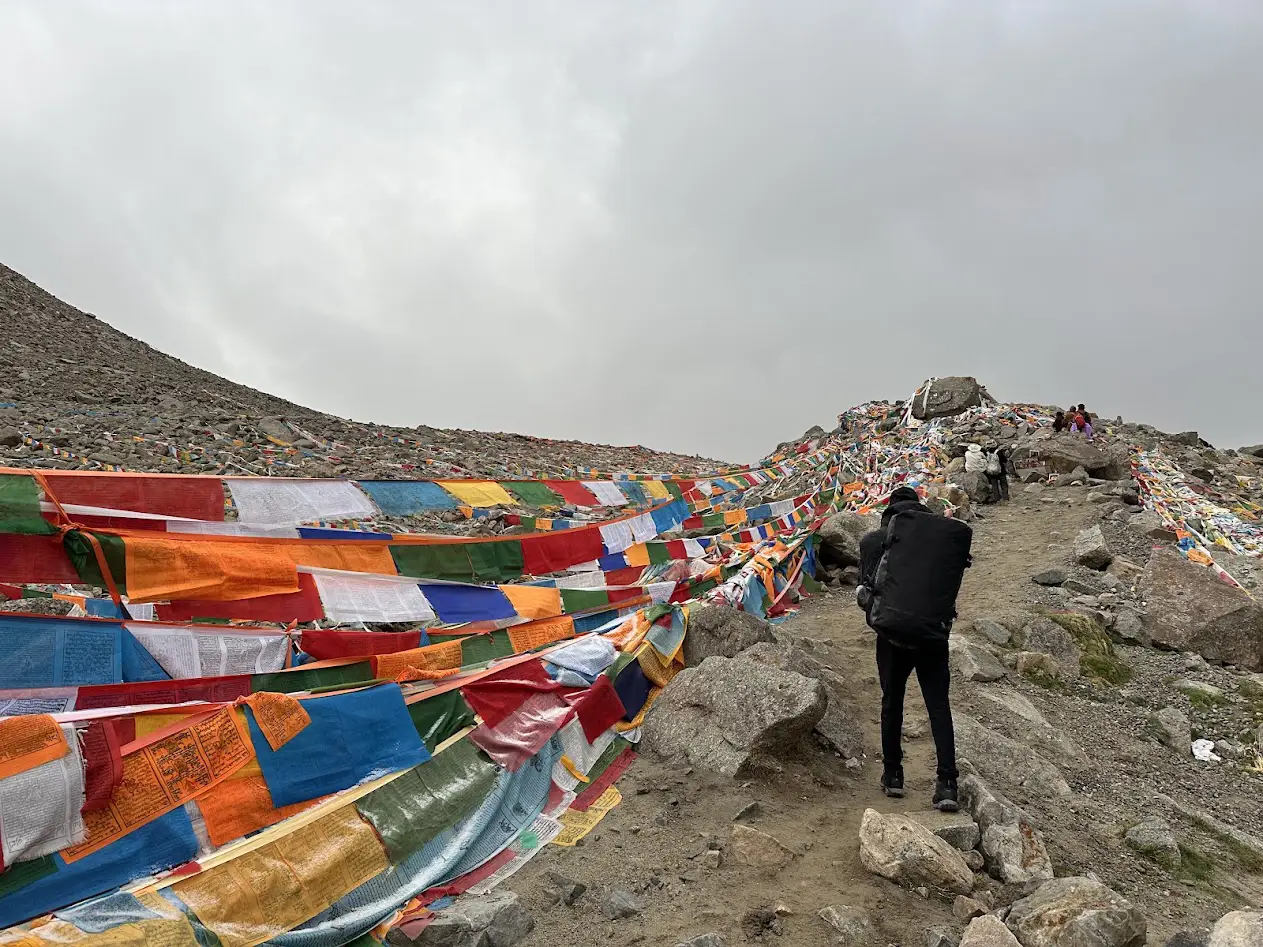
Permits and Local Regulations: Essential for a Smooth Journey
Besides weather and festivals, understanding permits and local regulations is crucial in determining the best time to visit Kailash Mansarovar. The region has specific entry requirements that vary depending on your nationality and the time of year.
Permit Requirements
- Tibet Travel Permit: All foreign travelers must obtain a Tibet Travel Permit to enter Tibet, including the Kailash Mansarovar region. A registered travel agency in Tibet will help you secure this permit. Processing times can take several weeks, so apply well in advance.
- Alien’s Travel Permit: If you plan to explore other areas of Tibet beyond Kailash Mansarovar, you’ll also need an Alien’s Travel Permit, typically arranged by your travel agency.
- Group Visa: Most foreign tourists enter Tibet on a group visa organized by your travel agency. Individual visas are rarely issued.
Seasonal Restrictions
- Winter Closure: Access to Kailash Mansarovar is often restricted during winter (November to March) due to harsh weather and road closures. Confirm accessibility with your travel agency before planning a winter trip.
- Peak Season Considerations: Due to high demand, securing permits and accommodations during peak season (fall) can be more challenging. Plan and book your trip well in advance to avoid disappointment.
Additional Tips for a Successful Trip to Kailash Mansarovar
- Stay Informed: Local regulations can change, so stay updated on the latest permit requirements and travel restrictions. Your travel agency or local authorities can provide the most up-to-date information.
- Respect Local Customs: Kailash Mansarovar holds deep religious significance. Maintain cultural sensitivity by dressing respectfully, keeping noise levels low, and adhering to your tour guide’s or local authorities’ guidance.
Planning Your Visit to Kailash Mansarovar: Making the Most of Your Spiritual Journey
Timing is vital when planning your visit to Kailash Mansarovar. Based on your preferences and available information, choose the best time to visit. This sacred region offers a diverse range of experiences throughout the year. Here are some practical tips for booking and traveling, as well as suggested itineraries to ensure a memorable and fulfilling tour.
Booking and Travel Tips for Your Kailash Mansarovar Adventure
- Book Early: To secure your spot, book your trip well in advance, especially if you aim for the peak season between May and September. It guarantees your accommodations, flights, and required permits.
- Partner with a Reputable Tour Operator: Choose a reliable tour operator like Peregrine Treks and Tours, which specializes in Kailash Mansarovar trips. They will handle all logistics, including permits, transportation, accommodations, and guides, ensuring a seamless experience.
- Prioritize Acclimatization: The high altitude demands proper acclimatization. Spend a few days at lower elevations before the trek to avoid altitude sickness.
- Pack Thoughtfully: Prepare for varying weather conditions by packing warm layers, waterproof gear, sturdy hiking boots, and sunscreen.
- Respect the Environment: Protect this fragile ecosystem by practicing “leave no trace” principles, disposing of waste responsibly, and avoiding disruptions to the local flora and fauna.
Recommended Itineraries for an Unforgettable Experience
Here are a few itineraries designed to maximize your experience during the best time to visit Kailash Mansarovar, offering a mix of adventure and cultural immersion:
- Classic Kailash Mansarovar Trek (14-16 days): Start on this well-trodden path, which combines a trek around Mount Kailash (Kora) with a visit to the sacred Lake Mansarovar. Marvel at breathtaking mountain vistas, explore ancient monasteries, and connect with the region’s profound spirituality.
- Simikot to Kailash Mansarovar Trek (21 days): This demanding trek begins in Simikot, Nepal, traversing remote villages and high-mountain passes en route to Kailash Mansarovar. If you crave adventure and stunning landscapes, this trek is for you.
- Lhasa to Kailash Mansarovar Overland Tour (15 days): Combine a visit to Tibet’s vibrant capital, Lhasa, with an overland tour to Kailash Mansarovar. Discover Lhasa’s rich cultural heritage, visit iconic landmarks like the Potala Palace, and enjoy scenic drives through the Tibetan plateau.
Conclusion: Choosing the Best Time to Visit Kailash Mansarovar
Choosing the best time to visit Kailash Mansarovar involves aligning your personal preferences with the unique characteristics of each season. Let’s recap the ideal times to visit:
- Spring (April to June): If you crave tranquility and scenic beauty, spring welcomes you with mild weather and less crowded trails.
- Fall (September to October): This peak season offers clear skies and comfortable temperatures, but expect larger crowds and higher prices.
- Summer (July to August): If cultural festivities interest you, consider a summer visit. However, be prepared for possible monsoon disruptions.
- Winter (November to March): We recommend avoiding winter due to harsh weather, road closures, and limited facilities.
Essential Tips for a Successful Kailash Mansarovar Journey
- Secure Your Trip Early: Book your Kailash Mansarovar Yatra early, particularly if you plan to travel during peak season, for the best chance at securing your desired accommodations and permits.
- Prepare for Varied Weather: Pack layers of clothing to adapt to the unpredictable Himalayan weather and ensure comfort in any condition.
- Allow Time for Acclimatization: Allow your body time to adjust to the high altitude before participating in challenging activities, thus minimizing the risk of altitude sickness.
- Embrace Local Customs: Respect the sacred nature of Kailash Mansarovar by dressing modestly, maintaining a peaceful demeanor, and adhering to local guidelines.
- Partner with a Knowledgeable Guide: Collaborate with a reputable tour operator for a seamless and enriching experience, as they will handle logistics and offer valuable insights into the region.
